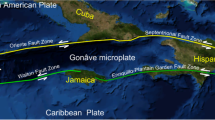Abstract
The Italian building code defines the seismic action in terms of elastic acceleration response spectra derived from the results of a probabilistic seismic hazard study performed for the whole national territory. This representation of the seismic input is insufficient for several situations (e.g. analysis of geotechnical systems or time-history analyses of structures), for which the seismic input needs to be specified in terms of accelerograms. This work illustrates a methodology for the seismic mesozonation of the Italian territory, with the aim of defining suites of 7 real accelerograms recorded at outcropping rock sites with flat topographic conditions and, most importantly, compatible with the elastic acceleration response spectrum defined by the Italian building code at any location in Italy. These accelerograms do not require any correction and can be directly used for nonlinear dynamic analyses of structures and geotechnical systems. The mesozonation is based on identification of groups of spectra with similar characteristics and shape. For each of these groups, a parent spectrum is defined and used for selecting real spectrum-compatible records. Limited linear scaling is then applied to these accelerograms to make them compatible with all the response spectra of the group. The results of this work for the 475-years return period are accessible through the SEISM-HOME Web-GIS (www.eucentre.it/seismhome.html) providing, for any site in Italy, a suite of 7 real accelerograms spectrum-compatible, on average, with the acceleration response spectrum prescribed by the Italian building code. SEISM-HOME is a useful tool for practitioners needing ready-to-use time-histories for seismic analyses.
Similar content being viewed by others
References
Al Atik L, Abrahamson NA (2010) An improved method for nonstationary spectral matching. Earthq Spectra 26(3): 601–617
Bommer JJ, Acevedo AB (2004) The use of real earthquake accelerograms as input to dynamic analysis. J Earthq Eng 8(SI1): 43–91
Boore DM (2005) SMSIM—fortran programs for simulating ground motions from earthquakes: version 2.3—a revision of OFR 96-80-A. U.S. Geological Survey open-file report
Bradley BA (2010) A generalized conditional intensity measure approach and holistic ground-motion selection. Earthq Eng Struct Dyn 39(12): 1321–1342
Circ NTC (2009) Circolare, n.617, 2 febbraio 2009, del Ministero delle Infrastrutture e dei trasporti approvata dal Consiglio Superiore dei Lavori Pubblici “Istruzioni per l’applicazione delle nuove norme tecniche per le costruzioni di cui al D.M. 14 gennaio 2008” (in Italian)
Corigliano M, Lai CG, Rota M, Strobbia C (2012) ASCONA: Automated Selection of Compatibile Natural Accelerograms. Earthq Spectra (in press)
Cornell CA (1968) Engineering seismic risk analysis. Bull Seism Soc Am 58: 1583–1606
EN 1998-1 (2005) Eurocode 8: design of structures for earthquake resistance—part 1: general rules, seismic actions and rules for buildings
GdL MPS (2004) Redazione della mappa di pericolosità sismica prevista dall’Ordinanza PCM 3274 del 20 marzo 2003, Rapporto conclusivo per il dipartimento di Protezione Civile, INGV, Milano—Roma, 65 pp. +5 appendici. Website: http://zonesismiche.mi.ingv.it/elaborazioniinItalian.
Halldorsson B, Papageorgiou AS (2004) Region specific ground motion simulations using the specific barrier model. Draft user manual for SGMSv5
Hancock J, Watson-Lamprey J, Abrahamson NA, Bommer JJ, Markatis A, McCoy E, Mendis R (2006) An improved method of matching response spectra of recorded earthquake ground motion using wavelets. J Earthq Eng 10(SI1): 67–89
Iervolino I, Maddaloni G, Cosenza E (2008) Eurocode 8 compliant real record sets for seismic analysis of structures. J Earthq Eng 12: 54–90
Iervolino I, Galasso C, Cosenza E (2010) REXEL: computer aided record selection for code-based seismic structural analysis. Bull Earthq Eng 8: 339–362. doi:10.1007/s10518-009-9146-1
Iervolino I, Galasso C, Paolucci R, Pacor F (2011) Engineering ground motion record selection in the ITalian ACcelerometric Archive. Bull Earthq Eng 9: 1761–1778. doi:10.1007/s10518-011-9300-4
2012 International Building Code (2011) International Code Council, 690 pp
Kottke A, Rathje EM (2008) A semi-automated procedure for selecting and scaling recorded earthquake motions for dynamic analysis. Earthq Spectra 24(4): 911–932
Lai CG, Foti S, Rota M (2009) Input Sismico e Stabilità Geotecnica dei Siti di Costruzione. IUSS Press, Pavia
Mai PM, Beroza GC (2003) Hybrid method for calculating near-source, broadband seismograms: application to strong motion prediction. Phys Earth Planet Inter 137: 183–199
McGuire RK (1995) Probabilistic seismic hazard analysis and design earthquakes: closing the loop. Bull Seism Soc Am 85(5):1275–1284
Meletti C, Valensise G (2004) Zonazione Sismogenetica ZS9—App.2 al Rapporto Conclusivo, Appendice 2 al documento “Redazione della Mappa di Pericolosità Sismica prevista dall’Ordinanza PCM del 20 marzo 2003, n. 3274, All. 1—Rappsorto Conclusivo, Istituto Nazionale di Geofisica e Vulcanologia. http://zonesismiche.mi.ingv.it/-inItalian
Motazedian D, Atkinson GM (2005) Stochastic finite-fault modeling based on a dynamic corner frequency. Bull Seism Soc Am 95: 995–1010
Mukherjee S, Gupta VK (2002) Wavelet-based characterisation of design ground motions. Earthq Eng Struct Dyn 31(5): 1173–1190
NEHRP (2004) Recommended provisions for seismic regulations for new buildings and other structures (FEMA 450) part 1: provisions. Building Seismic Safety Council, National Institute of Building Sciences, Washington, D.C
NTC (2008) Norme tecniche per le costruzioni, Ministero delle Infrastrutture e dei Trasporti, Decreto Ministeriale del 14 gennaio 2008, Supplemento ordinario alla G.U. n. 29 del 4 febbraio 2008
Shome N, Cornell CA, Bazzurro P, Carballo JE (1998) Earthquakes, records, and nonlinear responses. Earthq Spectra 14(3): 469–500
Zini A, Rinaldis D, Pugliese A (2011) Raggruppamento della pericolosità sismica del territorio nazionale attraverso parametri statistici. In: Proceedings of 14th Italian conference on earthquake engineering, Bari (in Italian)
Zuccolo E, Corigliano M, Taverna L, Lai CG (2011) Meso-zonazione di un territorio per la definizione di accelerogrammi reali spettro-compatibili. In: Proceedings of 14th Italian conference on earthquake engineering, Bari (in Italian)
Author information
Authors and Affiliations
Corresponding author
Rights and permissions
About this article
Cite this article
Rota, M., Zuccolo, E., Taverna, L. et al. Mesozonation of the Italian territory for the definition of real spectrum-compatible accelerograms. Bull Earthquake Eng 10, 1357–1375 (2012). https://doi.org/10.1007/s10518-012-9369-4
Received:
Accepted:
Published:
Issue Date:
DOI: https://doi.org/10.1007/s10518-012-9369-4




